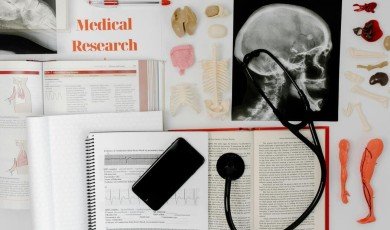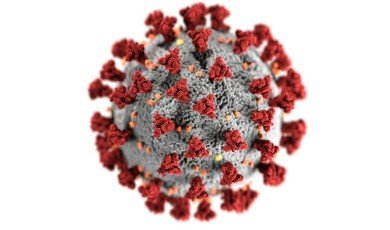Around the world, health systems, research labs, and biotech companies are under constant pressure to detect, analyze, and counter new viral threats faster than ever before. Traditional methods alone can no longer keep up with the volume of data, the speed of viral mutations, or the global scale of outbreaks. Artificial intelligence is stepping into this gap, offering a powerful way to automate analysis, streamline workflows, and uncover patterns that humans might miss. With the right AI automation tools, organizations can accelerate everything from early detection to vaccine development while conserving precious human expertise for the highest‑value decisions.
Main Research: 9 Ways AI Tools Are Transforming Viral Defense
1. Supercharging Early Detection and Outbreak Monitoring
AI models excel at scanning massive, fast-changing data streams—news reports, social media posts, hospital records, and laboratory findings—to identify signals that may indicate a new outbreak. Machine learning algorithms can:
- Flag unusual spikes in symptoms across regions or hospitals
- Correlate environmental, demographic, and mobility data with infection clusters
- Alert public health teams before local cases surge
This proactive surveillance shortens the window between the first appearance of a pathogen and the moment authorities start to respond, which is critical for containment.
2. Accelerating Genomic Sequencing and Variant Analysis
When a virus spreads, its genetic code mutates. Tracking these mutations is essential for understanding transmissibility, severity, and resistance to existing treatments. AI-powered analysis tools help by:
- Automatically assembling raw sequencing reads into full viral genomes
- Classifying new variants and mapping their spread across regions
- Highlighting mutations of concern based on known biological impacts
What once required manual bioinformatics expertise over weeks can now be processed in hours, allowing faster scientific and policy decisions.
3. Optimizing Vaccine and Drug Discovery Pipelines
Designing vaccines and antivirals is a race against time. AI brings speed and predictive power into each stage:
- Predicting which viral proteins are most likely to trigger strong immune responses
- Screening huge libraries of molecules virtually to find promising candidates
- Modeling protein–protein interactions to identify potential binding sites
By reducing the number of compounds that need to be physically synthesized and tested, AI cuts costs and shortens development timelines without sacrificing quality.
4. Enhancing Diagnostics and Point-of-Care Testing
Rapid, accurate diagnostics are central to controlling the spread of infectious diseases. AI-enhanced diagnostic tools can:
- Interpret medical imaging (like chest X‑rays or CT scans) for viral pneumonia
- Analyze PCR and antigen test results for subtle patterns or anomalies
- Support clinicians with decision-support systems that combine symptoms, histories, and lab data
These tools increase diagnostic accuracy, help standardize care across facilities, and reduce the burden on overloaded medical staff.
5. Powering Predictive Modeling for Public Health Strategies
AI-driven epidemiological models can simulate how a virus may spread under different conditions and policy decisions. Using big data on mobility, demographics, vaccination rates, and historical trends, AI tools:
- Forecast case counts and hospitalization demand
- Evaluate potential impact of interventions like masking, travel restrictions, or school closures
- Help allocate limited resources—ventilators, ICU beds, and medical staff—more effectively
This modeling supports evidence-based decision-making, allowing governments and organizations to act before health systems are overwhelmed.
6. Automating Laboratory Workflows and Research Operations
Virology and immunology labs are full of repetitive, high-precision tasks—from plate reading and data logging to quality control. AI-enabled automation platforms:
- Streamline experimental design and scheduling
- Automate data capture, cleaning, and integration across instruments
- Identify anomalies in results that may indicate experimental errors
When routine workflows are automated, researchers can focus on advanced analysis, strategy, and creativity instead of manual data wrangling.
7. Strengthening Hospital Preparedness and Clinical Workflows
During viral surges, hospitals must balance surging caseloads with finite resources. AI systems support clinical operations by:
- Predicting admission volumes and ICU occupancy based on community trends
- Optimizing staff schedules to match forecasted demand
- Prioritizing patients based on risk scores derived from medical history and real-time vitals
This kind of intelligent capacity management helps hospitals maintain standards of care even under extreme pressure.
8. Enabling Real-Time Surveillance of Treatment Effectiveness
Once treatments and vaccines are deployed, constant monitoring is essential to detect side effects, waning immunity, or resistance. AI tools can:
- Scan electronic health records and pharmacovigilance databases for adverse event patterns
- Correlate clinical outcomes with treatment regimens, demographics, and co‑morbidities
- Alert regulators and manufacturers to emerging safety or effectiveness issues
This ongoing feedback loop ensures that therapeutic strategies remain responsive to real-world data, not just clinical trial results.
9. Coordinating Global Collaboration and Knowledge Sharing
Viruses do not respect borders, so defense efforts must be global. AI platforms facilitate international collaboration by:
- Standardizing data formats from different labs and agencies
- Indexing and summarizing vast volumes of research papers and reports
- Surfacing the most relevant findings for specific research questions or policy needs
With automated translation, intelligent search, and smart summarization, AI reduces information silos and accelerates collective progress across countries and disciplines.
Conclusion
The world’s defense against viral threats increasingly depends on the speed, scale, and precision that AI can provide. From early detection to discovery, diagnostics, clinical care, and global coordination, intelligent systems are reshaping how humanity anticipates and responds to outbreaks. Organizations that invest in robust, well-integrated AI platforms are better positioned to protect populations, support frontline workers, and adapt to fast-changing threats. As data volumes grow and pathogens evolve, the role of AI will only deepen—turning raw information into actionable insight and enabling faster, more targeted responses to the next wave of viral challenges.







